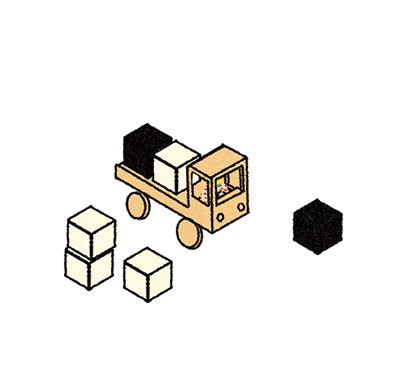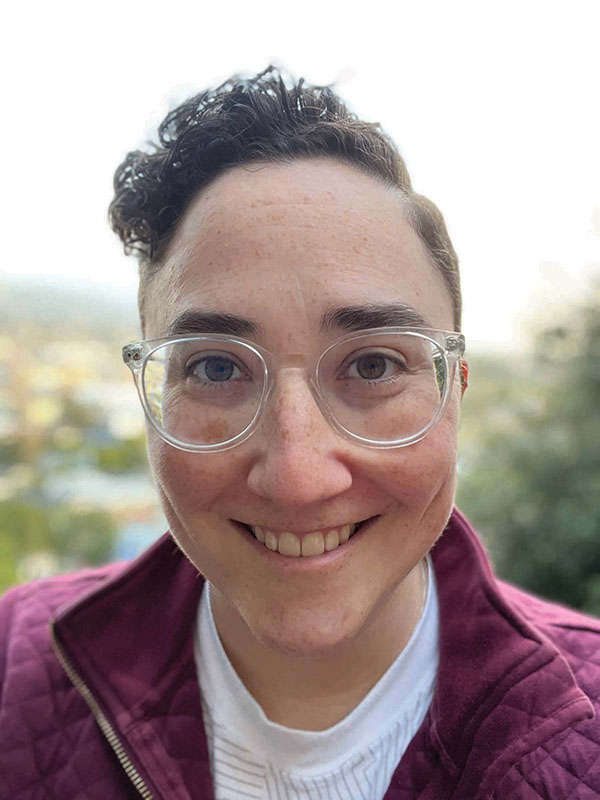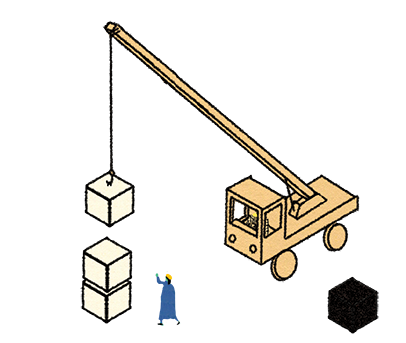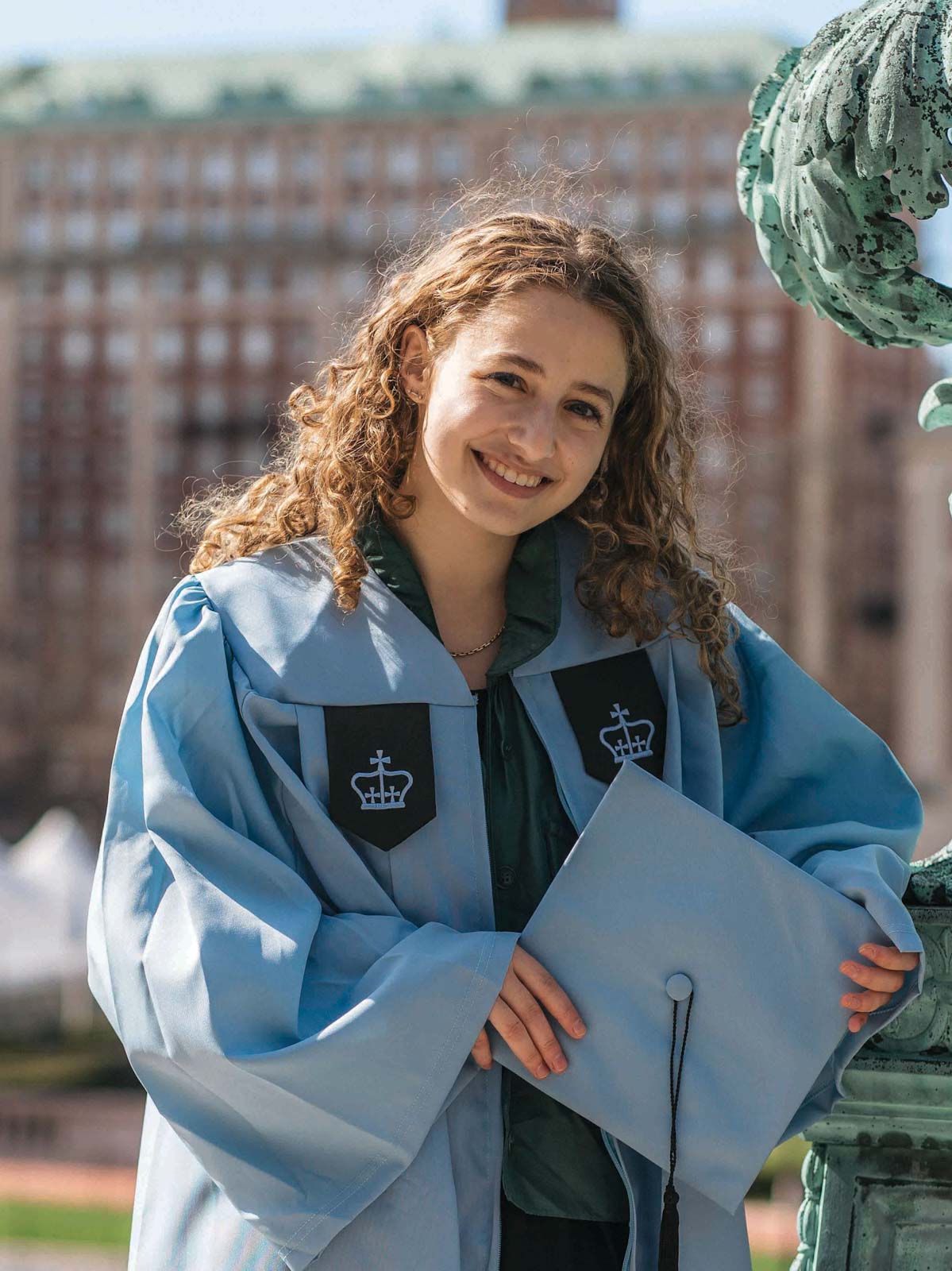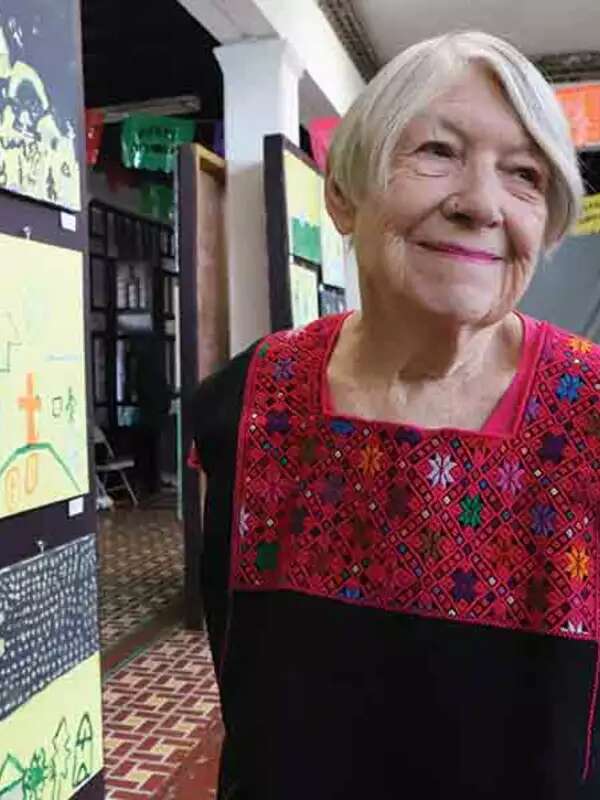
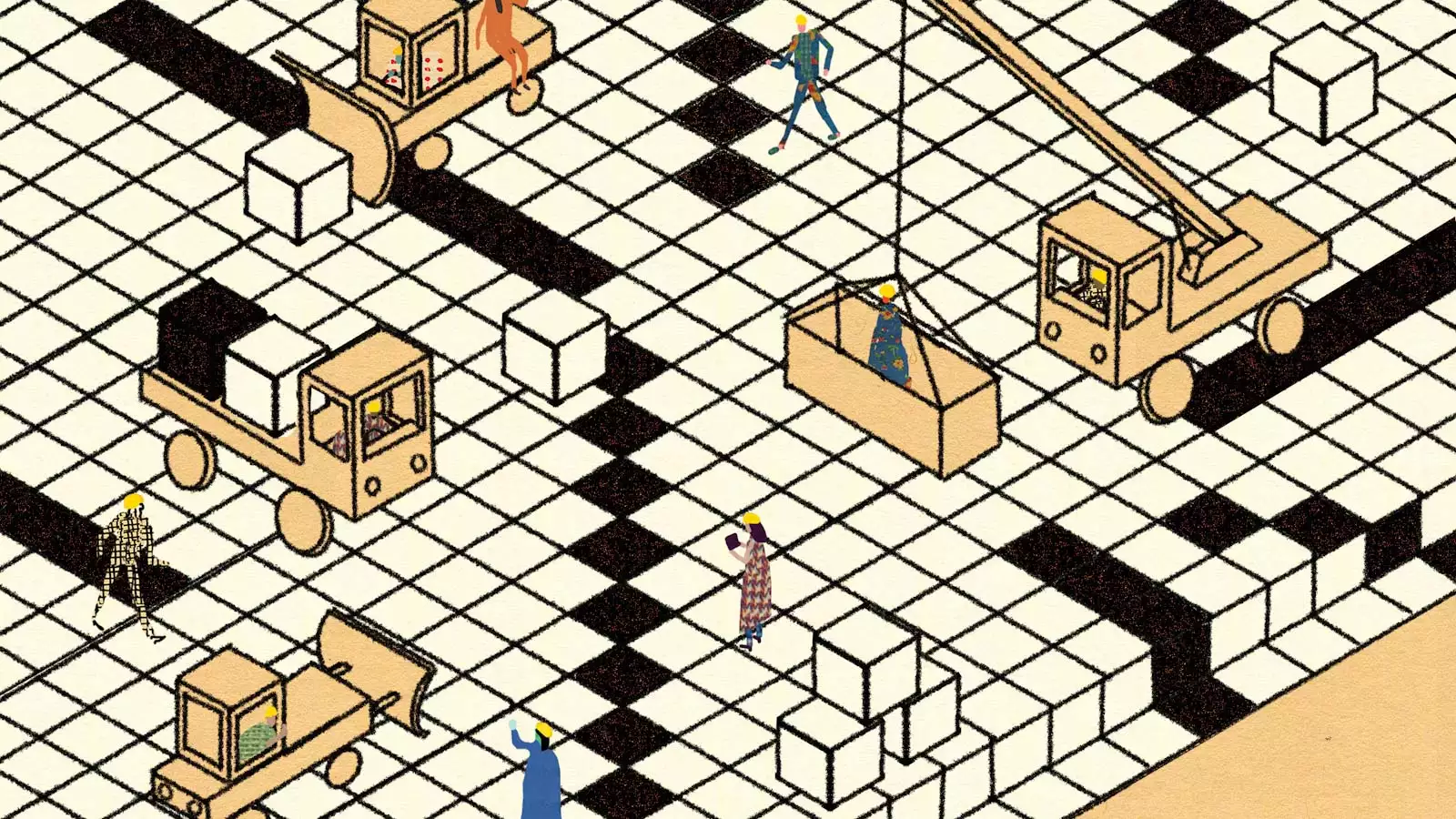
Today, sitting down with a crossword, especially if you do it on paper and in ink, evokes a certain sophistication and smarts. But there was a time in the early part of the last century when these puzzles, though all the rage, were considered by many to be a colossal waste of intellect. The crossword was also considered “a threat to the family unit” — wrote one of The New Yorker’s puzzle constructors, Anna Shechtman, in the December 27, 2021, issue — due in no small part to the fact that the earliest innovators were not just women, they were “New Women,” who, it was feared, could shatter what remained of Victorian mores. These days, the analog pastime has caught up to modern times, engaging a more inclusive audience that fosters community, and fun, for both solvers and creators. Here, we present puzzles and musings on the ubiquitous American hobby by three Barnard cruciverbalists: Rebecca Gray ’13, Rebecca Goldstein ’07, and Gustie Owens ’22. Enjoy.
Rebecca Gray ’13
Rebecca Gray is a writer, educator, and musician living in Seattle. They regularly contribute crossword puzzles to Barnard Magazine.
How did you start writing crossword puzzles?
I am a percussionist; that’s my first art form. I am also really into math and figuring out how things work. But there was a particular time I was staying with relatives who had strange rules and I couldn’t make music. I was like, “Oh, I have a piece of paper and a pencil, and I like shapes and words. I’ll just focus on making crosswords.” I would just freehand with a straightedge and a pencil, create a grid, and start writing out words that I liked. It was super chaotic and looked like a psychopathic murderer writing iterations of letters and words that make no sense. But it was fun and a good way to try to figure out how the puzzles worked.
What inspires you?
I watched this documentary from 2006 called Wordplay. It’s deliciously nerdy, but within that movie it shows how to make a puzzle. I felt like I learned some rules, and I began to experiment with themes, like female protagonists of books, such as Virginia Woolf’s Orlando and Daphne du Maurier’s gothic novel Rebecca — which was funny because it’s my name. And Beezus and Ramona [from Beverly Cleary’s 1955 children’s novel]. So that’s kind of how it started. Now I use this free, very bare-bones software called Phil.
Can crosswords foster community?
The first crosswords were really focused on current events. If you weren’t reading that week’s New York Times, you would be lost. But I love community. I love ways that we can help each other. We shouldn’t have to know everything that’s happening in the world all at once, but if we’re a part of the community, it’s really nice to know that we can understand what’s going on through puzzles. Then there are deeply general puzzles, like USA Today puzzles. They are trying to appeal to millions of people, and that’s great, but niche puzzles are great too. I put stuff in my puzzles that not everyone will get. Hopefully there’s enough material in there that people relate to — that’s how you do community. But I think my last puzzle for Barnard Magazine, I kind of went off the deep end with Rage Against the Machine.
What is the perfect setting to enjoy crossword puzzles?
Airplane, for sure. It’s a super-focused space that has a finite ending. It makes your brain really work, and that’s kind of yummy.
Rebecca Goldstein ’07
Rebecca Goldstein lives in the San Francisco Bay Area with her wife, Ariela. She holds a doctorate in pharmacology and now leads a small group supporting immuno-oncology drug discovery efforts at Merck.
How do you construct a themed puzzle?
Almost all the puzzles I write are themed, meaning that the longest entries in the puzzle are unified by a common idea or element of wordplay. The themes are often tied together by a final entry known as a revealer. I’m mostly inspired by phrases I come across in the wild — in conversation, in television dialogue, and even in solving crossword puzzles — that seem like potential revealers or theme entries. I will then set out to find matching entries. For example, as I became more and more consumed with constructing crosswords, I remarked to my wife that it felt like I had CREATED A MONSTER, which I immediately recognized as a perfect revealer for a theme set with entries containing hidden monsters, like LIN(T ROLL)ER and PRI(DE MON)TH. That idea became my first New York Times crossword acceptance.
Can a crossword be subversive?
Yes, absolutely. The New York Times crossword is famously known for needing to pass “the breakfast test.” In other words, would the content of the puzzle be acceptable for discussion over the family breakfast table? That can be limiting. There is a burgeoning indie scene of crosswords that embraces more provocative content than mainstream publishers will allow. There are numerous constructor blogs, subscription-based crosswords like the American Values Crossword, and fundraising puzzle packs like “These Puzzles Fund Abortion Too” and “Queer Qrosswords.”
The earliest innovators of the crossword were women. How does that resonate with you?
Despite strong female influence in the birth of crosswords, for decades, crossword puzzles have skewed largely toward white cis-het male normativity, which can be alienating for new solvers who don’t see themselves represented in the puzzle. As the voices of new constructors and solvers have gathered steam, the larger crossword community has grappled with the growing demand for increased representation in puzzles. In mainstream publications, editors Patti Varol of the Los Angeles Times, Erik Agard of USA Today, and David Steinberg of Universal Crossword have all made tremendous strides in increasing the diversity of constructors, editors, and puzzle content. In the indie world, the Inkubator only publishes puzzles written by women and nonbinary people. The way I see it, not everyone will enjoy every puzzle they encounter, but the more diversity that exists in puzzles, the more likely everyone is to find something they see themselves represented in, and I’m all for it.
What is the perfect setting to enjoy a crossword?
I solve for speed, so for me, a silent room with no distractions.
Gustie Owens ’22
Gustie Owens was part of the 2022 inaugural class for the Diverse Crossword Constructor fellowship. She lives in New York City and works as a research assistant at MDRC, an education and social policy nonprofit.
How do you start a puzzle?
I always start with either a very long word or a theme that I am excited about. I have an ongoing list of words between nine and 15 letters that I would love to use at some point in a crossword. Oftentimes, I get inspired when I’m solving a crossword as well and try to think of what I like about a given crossword and how I could pull that into something I’m making. I really don’t make most of my puzzles for a more mainstream audience though. Like, working on The Federalist at Columbia, I would start with a totally blank grid and then fill it with words or phrases that would really only make sense to students. I had a running list of words for Fed crosswords as well, related to the student union, curriculum, and crazy decisions from administrators.
What is the role of crossword puzzles in the age of Wordle and sudoku?
I think Wordle reemphasized the socialness of word games, which I love. During the pandemic, at least, I know many people in my circle who would solve crosswords or the Spelling Bee on Zoom with co-workers and friends. In retrospect, it was crazy the number of group chats I sent Wordle scores to. After college, we don’t really get to do our morning routines with friends. Solving something together is like another version of seeing your friends in the communal bathroom and having a little low-energy check-in while brushing teeth. I think for a while, it honestly served as a wellness check. I remember not sending the Wordle to my mom and brother for a few days during COVID and getting a call to make sure I was doing okay.
How do you view the future of the crossword?
I hope more people do it! Solving is becoming even more social. There’s a cool website for solving with others called DownforaCross.com. I think tons of people are working super hard to make crosswords more accessible in a myriad of ways.
What is the perfect setting to enjoy a crossword?
I think on the subway. Just like when you’re reading a popular good book and people give you little comments like, “Oooh, I wish I could read that for the first time again.” I love when people look over my shoulder when I’m solving crosswords or give a little nod or comment.

